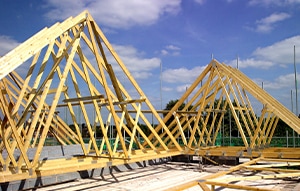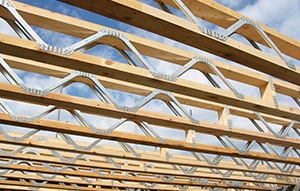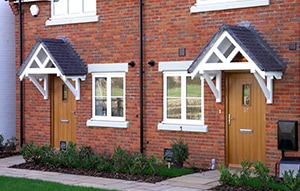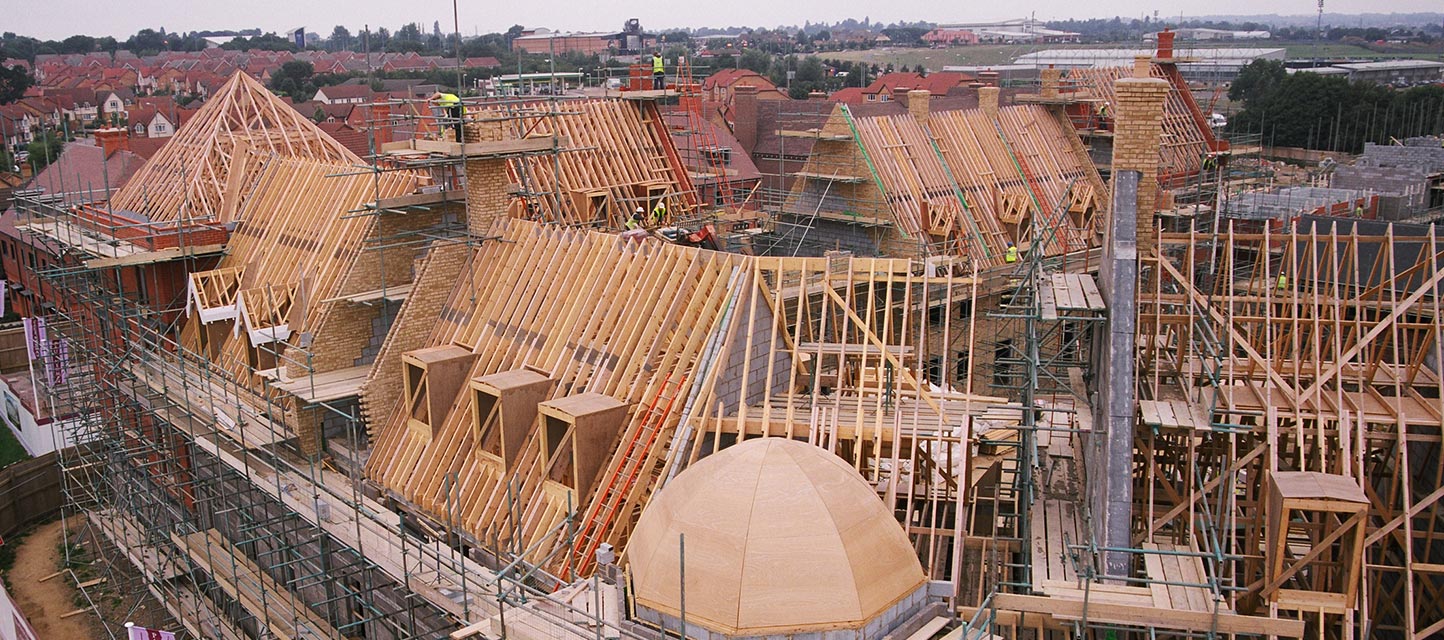The housing market in 2023 – 5 reasons to be cheerful
Many commentators have sounded dire warnings about the housing market in 2023, with particular concerns for the new homes market which is predicted to be challenging for volume housebuilders and, by implication, businesses like ours in their supply chain.
However, at Scotts we see many reasons to be cheerful for the year ahead. It is already clear that the pace of new home building is certainly not coming to a halt, demand remains strong for timber trusses, metal web joists and our other timber engineered products, and there is plenty of potential for housebuilding to recover further as inflation comes under control and consumer confidence starts to return.
Here are five of our reasons to be cheerful about the new homes market in 2023:
- People still need new homes
Often the more cautious of all the market commentators, the Construction Products Association has predicted a shallow recession in 2023, with demand likely to pick up again in 2024.
In our recent interview with Dave Hopkins, chief executive of Timber Development UK, he also expressed a common view that the market would be flat this year.
But everyone also agrees the demand for new homes is still very much there, and we continue to face a chronic shortage of homes to meet the needs of new households in the UK. The Government pledged in 2019 to build 300,000 new homes every year to match new demand, but we continue to be way off these targets.
The end of the Help to Buy scheme at the end of March is expected to slow new sales. But political support for the crucial first time buyer market is continuing, with an extension of the Mortgage Guarantee Scheme which particularly helps first time buyers with just a 5% deposit, offering lenders a guarantee for the other 95% on homes up to £600,000. The Home Owners Alliance points out that there are also other schemes to support buyers, and this month the Home Builders Federation (HBF) launched a dedicated website to promote the deposit unlock scheme.
Housebuilders’ sales rates have dropped compared to the boom of last year, but as Redrow’s chief executive told Housebuilder magazine this month, he was “looking forward to the new market”, commenting that the market appeared “to be finding a new, natural level”. All the volume housebuilders have started marketing again, a sure sign they see good sales to be had.
Apparently Rightmove reported a record number of new sellers put their property up for sale on Boxing Day – a 46% jump in new listings from the same time in 2021. Rightmove’s Tim Bannister said this kind of seller activity indicated “good signs for the year ahead.” And according to the Propertymark Housing Market Insight for January, there was an 80 per cent rise in new buyer demand in the New Year.
Yes, it’s still very early days. But it does look like agents are starting to report a more active and energetic start to the year than many pundits expected, and housebuilders are starting to see encouraging movements too.
- The mortgage market is still strong
As a recent report on the Mortgage Solutions website pointed out: “Much of the recent commentary on the UK housing sector has been relentlessly negative – but much of it is wrong… While the market has suffered from recent political turbulence and the rising cost of living, there are already signs that the worst is past, and we could soon see the market pick up again.”
Mortgage rates are stabilising. Immediately after last autumn’s disastrous mini-budget and Trussonomics scare, mortgage rates rocketed to over six per cent, a level last seen in 2008. But rates have recovered steadily since then, and there is now a healthy range of fixed term deals available at interest rates well under four per cent.
The general consensus seems to be that markets expect the base rate to rise to 4.5 per cent by mid-2023, before falling back to 3.25 per cent in three years’ time. Mortgage lenders are confident that they can provide highly competitive deals over the coming months.
- House prices remain pretty healthy
While property prices have dipped slightly in recent months, they remain well above pre-pandemic levels. Some predict they will stay flat in the coming months, others expect a bit more of a slide, but certainly not a crash. This starkly contrasts the 2008 recession, when the average property slumped by 15 per cent.
As the same article in Mortgage Solutions points out: “Average UK house prices rose 10 per cent in 2021 and another 12.6 per cent in 2022 to October – up more than a fifth in under two years. Given that 2020 was also strong, despite the onset of the pandemic, what we’ve seen is less of a correction and more the froth coming off at the top of a bull market.”
All the housebuilders we talk to are still profitable and many expect average selling prices to continue to grow, albeit slower this year.
- Rising materials costs have now peaked
Rising material costs are one of the biggest concerns for UK housebuilders, with prices of energy-intensive products such as aggregates, glass, bricks, plasterboard, cement and concrete all particularly impacted.
In December 2022, government data revealed that monthly material costs increased by 11.2% compared to the previous year.
But while materials prices remain high in 2023, many experts think it is likely they have peaked.
In fact, timber prices are already starting to come back down again to much more sustainable and realistic levels. This means a return to much more stable prices, allowing volume housebuilders to plan more reliably, and this brings confidence back to the market.
- Timber construction has a bright future
Despite any short term glitches in the market, the medium and long-term trends in favour of timber engineering and increased use of wood in construction is very encouraging.
As Nick Boulton, head of technical and trade at Timber Development UK points out: “Demand for timber is likely to increase significantly in the long-term, as the UK looks to reduce emissions in the built environment and achieve net zero by 2050.
“Timber products such as timber frame structures and cladding, timber trussed rafters, timber spandrel and gable panels, interior joinery and a whole host of other wood-based products used in new homes all play a critical role in reducing the carbon footprint of our housing stock.
“The timber industry also offers a useful tool for the Government in its quest to build greener homes and ‘level up’. The timber supply chain is capable of producing an abundance of high-quality and low-carbon homes and boasts a developed and localised manufacturing base that is ripe for expansion throughout the UK.”
A net zero economy is the ‘growth opportunity of the 21st Century’ according to a recent Government-sponsored report. Scotts Timber Engineering is at the forefront of this market growth and we are looking forward to a busy year ahead.
If you would like to speak to one of our team, simply fill out your details below and a member of our sales team will be in touch very soon to discuss your project requirements.
If you would like to speak to one of our team, simply fill out your details below and a member of our sales team will be in touch very soon to discuss your project requirements.
- Copyright © Scotts of Timber 2024
- Privacy Policy




















